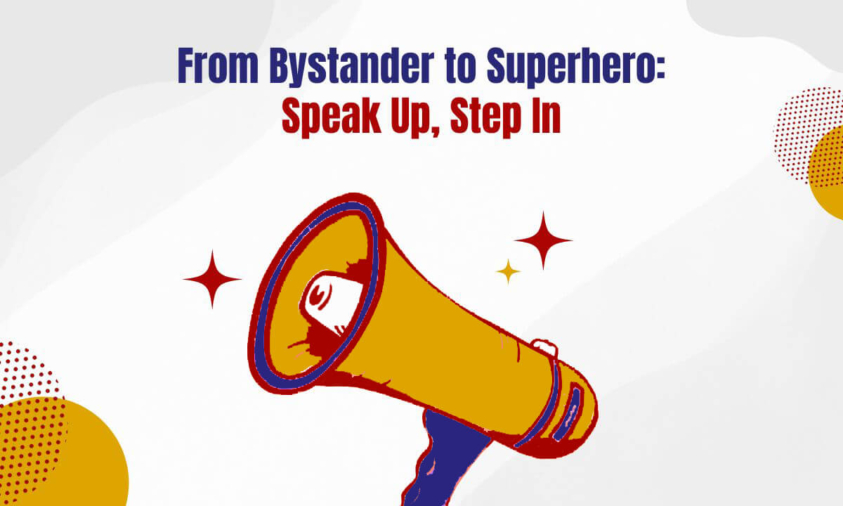Have you ever been in a situation where something felt off, but you weren’t sure how to react? Maybe a friend was being treated unfairly, or you witnessed something unsettling in public. It’s a common experience!
Imagine this: Your siblings did something mischievous, and your parents found out. Uh oh! You see them getting a scolding. You feel bad for them! You want to jump in and explain that maybe it wasn’t entirely their fault, but you’re also worried you might get in trouble too! So, you hide in a corner, watching.
That’s the heart of being a “bystander,” and understanding its implications is crucial.
Who is a Bystander?
A bystander is someone who witnesses an event or situation. This could range from witnessing someone being teased or hurt to noticing someone who seems lost and confused.
The bystander effect refers to the phenomenon in which individuals are less likely to offer help to a victim when other people are present. It occurs in the workplace where individuals may be less likely to speak up or act in the face of unethical or inappropriate behavior when others are present.
This can include harassment, discrimination and other forms of mistreatment. Fear of retaliation or uncertainty about whether their concerns will be taken seriously can silence individuals. This highlights the critical need for bystander intervention, a concept applicable in all areas of life from our homes to workplaces and public spaces.
What is Bystander Intervention?
Bystander intervention is when a person who witnesses something happening steps in to help.
Sometimes, people who are doing something wrong won’t stop unless someone tells them to. Sometimes, the person who is getting hurt or needs help is too scared or unable to ask for it themselves. That’s where you come in!
Bystander intervention can apply to a variety of situations, including bullying, hazing, harassment, microaggressions, or violence.
By intervening, we send a clear message that harmful actions are unacceptable. When this message is consistently reinforced within our community, we can reshape what’s considered acceptable and prevent problematic behavior.
Learning to recognize when someone is in danger and how you can intervene safely is an essential skill. Safely intervening could mean anything from a disapproving look, interrupting or distracting someone, not laughing at a sexist or a violent joke, talking to a friend about their behavior in a non-confrontational way to caring for a friend who’s experienced problematic behavior. Other times, it means asking friends, staff, or the police for help.
Bystander Intervention in the Workplace: Creating a Culture of Respect
In today’s diverse and inclusive workplaces, fostering an environment where all employees feel safe and respected is crucial. Bystander intervention plays a vital role in achieving this goal by empowering employees to take a stand against inappropriate behavior. This not only helps in mitigating immediate harm but also contributes to creating a culture of accountability and respect.
Research shows that if you are alone, you will help 80% of the time but if you are in a group, you will help only 20% of the time because of the diffusion of responsibility, you think someone else will do something.
Organizations that successfully create an inclusive and positive culture understand that all of its people have an important role to play in maintaining a harassment-free workplace. Any incident of harassment can affect more than just the parties directly involved, and all employees are responsible for helping to maintain a working environment that is free from harassment, discrimination, and other inappropriate conduct.
Ensuring that employees understand their role as bystanders to potential incidents is vital to creating a safe and inclusive culture, and in some jurisdictions, providing such training is mandatory.
Bystander intervention training benefits individuals at any and all levels of a business or organization. With more skills, familiarity, and awareness about how to identify and confront potential harassment, employers can create workplaces that are genuinely inclusive of all workers.
Organizations can take steps to prevent the bystander effect in the workplace by
- Creating a culture of openness and accountability.
- Providing training on recognizing and reporting inappropriate behavior.
- Encouraging employees to speak up.
Additionally, having effective communication and reporting channels in place can help to ensure that any concerns are heard and addressed in a timely and appropriate manner.
When employees feel safe at work because of anti-harassment efforts, they are more likely to teach others about preventing harassment. They will share what harassment is, how to spot it, and how to react. This makes sure that the company’s anti-harassment rules and training are always talked about and used. This also helps to stop harassment from happening. Even something as small as reminding a coworker to be careful with their greetings can help create a safe and inclusive workplace by starting a conversation about what could be seen as harassment.
Being a helpful bystander isn’t always easy, but it’s always the right thing to do. Even small acts of kindness and bravery can make a big difference in someone’s life. So, keep your eyes open, be brave, and remember, you have the power to be a superhero in your everyday life!
If you’re unsure how to train your employees on effective bystander intervention, we’re here to help. Get in touch for customized training sessions at +919004521614 or [email protected].
Authored by Gomathi Sridevi Radhakrishnan, Content Writer Intern


 Cart is empty
Cart is empty 
